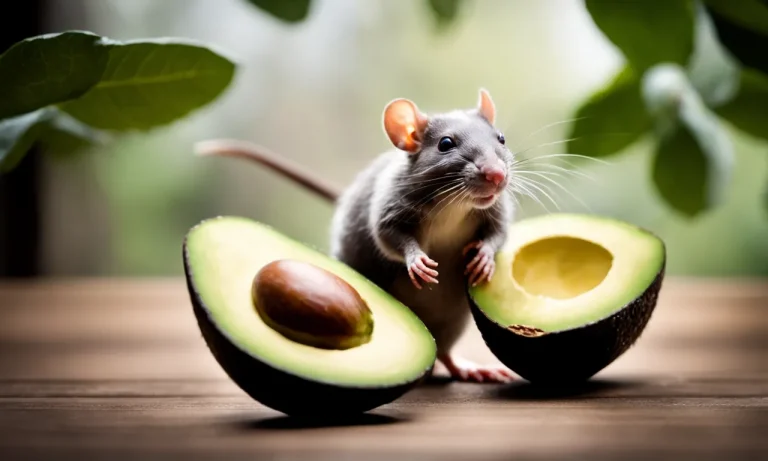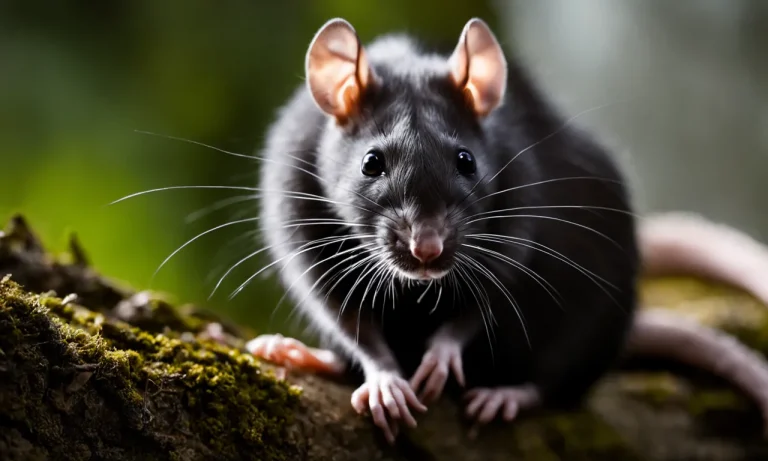New York City’s rat problem is legendary. If you’ve visited NYC, you’ve likely seen the rodents scurrying in the subway tunnels or rummaging through garbage on the sidewalks. So why exactly does New York have so many rats?
In this comprehensive guide, we’ll explore the various factors that have contributed to NYC’s rampant rat population.
If you’re short on time, here’s a quick answer: New York City has so many rats due to its dense population, aging infrastructure, abundant food waste, and the adaptability and reproductive speed of rats themselves.
New York City’s Large Human Population
One of the main reasons why New York City has such a significant rat problem is its large human population. With over 8.4 million people living in the city, it’s no wonder that there are also millions of rats scurrying around. The sheer number of humans means more waste, which in turn attracts rats.
More Humans Means More Garbage
New York City produces a staggering amount of garbage every day. According to the New York City Department of Sanitation, the city generates approximately 12,000 tons of residential and commercial waste each day. With so much waste being generated, it becomes a veritable buffet for rats.
Rats are scavengers and are attracted to the abundance of food waste that is left out in the open. They can easily find scraps of food in dumpsters, garbage cans, and even on the streets. The more humans there are, the more food waste there is, creating an ideal environment for rats to thrive.
Additionally, the high population density in New York City means that there are more opportunities for rats to come into contact with humans. This increases the likelihood of rat infestations in homes, businesses, and public spaces.
Development and Construction Provide Shelter
New York City is constantly undergoing development and construction, which provides rats with ample shelter. As buildings are torn down or renovated, rats are displaced from their original habitats and seek refuge in new areas.
The construction sites themselves also provide rats with hiding places and food sources. The presence of construction materials, such as wood and debris, can attract rats and provide them with a safe place to nest.
Furthermore, the underground subway system in New York City offers an extensive network of tunnels and stations that rats can use to travel and find shelter. These dark and secluded areas provide rats with a perfect breeding ground.
New York’s Aging Infrastructure
One of the main reasons behind the high rat population in New York City is its aging infrastructure. The city’s subway tunnels and sewers provide the perfect habitat for rats to thrive. These underground systems, which were built many decades ago, have numerous cracks and crevices that rats can easily access.
The abundance of food waste and garbage in the subway tunnels and sewers also attracts rats, making it an ideal environment for them to live and breed.
Subway Tunnels and Sewers
The subway tunnels and sewers in New York City are a maze of interconnected passageways that provide rats with easy access to different parts of the city. These tunnels and sewers are often dark, damp, and filled with debris, creating an ideal habitat for rats to hide and reproduce.
Additionally, the subway system transports millions of commuters every day, providing rats with a continuous source of food and shelter.
The New York City Department of Health and Mental Hygiene estimates that there are approximately two million rats living in the city’s subway system alone. These rats not only pose a health risk but also contribute to the deterioration of the infrastructure.
Their constant gnawing on electrical wires and structural components can lead to costly repairs and disruptions in the subway service.
Aging Buildings Offer Access
Another factor contributing to the high rat population in New York City is its aging buildings. Many of the city’s buildings were constructed before modern pest control measures were implemented, making them susceptible to rat infestations.
The cracks and gaps in these old buildings provide rats with easy entry points, allowing them to move freely between buildings and establish nests.
The presence of rats in aging buildings not only poses a health risk but also affects the structural integrity of the buildings. Rats are known to chew through insulation, wiring, and even wooden beams, causing damage that can compromise the safety of the structure.
This necessitates costly repairs and maintenance to ensure the safety and habitability of these buildings.
Abundant Food Waste
New York City is notorious for its rat population, and one of the key factors contributing to this issue is the abundant food waste found throughout the city. From garbage on the streets and in the subways to restaurants and food markets, there is no shortage of readily available food for rats to feed on.
Additionally, the presence of landfills on the city outskirts also plays a role in attracting rats.
Garbage on Streets and in Subways
With a population of over 8 million people, it’s no surprise that New York City produces a significant amount of waste. The garbage generated by residents, businesses, and tourists ends up on the streets and in the subways, creating a smorgasbord of food for rats.
Despite efforts to maintain cleanliness, it can be challenging to keep up with the sheer volume of waste in such a densely populated area.
Restaurants and Food Markets
New York City is famous for its diverse culinary scene, with countless restaurants and food markets offering a wide range of cuisines. While this is undoubtedly a great thing for food lovers, it also means that there is a substantial amount of food waste generated by these establishments.
Leftover food, spoiled produce, and discarded packaging all contribute to the availability of food sources for rats.
Restaurants and food markets have strict regulations in place regarding waste management, but the sheer number of establishments in the city can make it challenging to enforce these rules effectively.
Rat infestations near food establishments can have serious consequences, including health risks and damage to the reputation of the establishment.
Landfills on City Outskirts
Although New York City has made significant strides in waste management, there are still landfills located on the outskirts of the city. These landfills receive a considerable amount of waste, and unfortunately, rats are attracted to these areas.
The presence of landfills provides rats with an additional food source, exacerbating the rat population problem.
Efforts have been made to mitigate the impact of these landfills on the city’s rat population, including improved waste management practices and ongoing monitoring. However, the proximity of these landfills to residential areas makes it challenging to completely eradicate the issue.
Ideal Conditions for Rats to Thrive
Rats are no strangers to the bustling streets of New York City. The city’s unique conditions create the perfect environment for these rodents to thrive. From their quick reproduction rates to their ability to adapt to urban environments, here are some of the key reasons why rats have become so prevalent in the Big Apple.
Quick Reproduction Rates
Rats are notorious for their rapid reproduction rates. A single female rat can have up to 12 litters in a year, with each litter consisting of around 6 to 12 offspring. This means that in just one year, a pair of rats can potentially give rise to hundreds of new rats.
With such prolific breeding capabilities, it’s no wonder that rat populations can quickly explode in urban areas like New York City.
Ability to Adapt to Urban Environments
Rats are highly adaptable creatures that can easily make themselves at home in urban environments. They are able to squeeze through the tiniest of gaps, climb walls, and navigate complex sewer systems.
This adaptability allows them to find shelter, food, and water sources within the city, ranging from garbage bins and subway tunnels to abandoned buildings and parks. New York City provides an abundance of these resources, making it an ideal habitat for rats.
Lack of Predators
Rats thrive in New York City partly due to the lack of natural predators. In their natural habitats, rats are preyed upon by larger animals such as owls, foxes, and snakes. However, in the concrete jungle, these predators are scarce.
The absence of significant natural predators gives rats a free reign and allows their populations to grow unchecked.
According to a study conducted by the New York City Department of Health and Mental Hygiene, there are an estimated two million rats in New York City alone. This staggering number is a testament to the ideal conditions that exist for rats to thrive in the city.
Conclusion
New York City’s large population, aging infrastructure, and abundance of food waste have created ideal conditions for rats to thrive. While the city has launched initiatives to curb the rat population, completely eliminating the resilient rodents is unlikely.
Controlling the spread of rats in NYC remains an ongoing battle.






